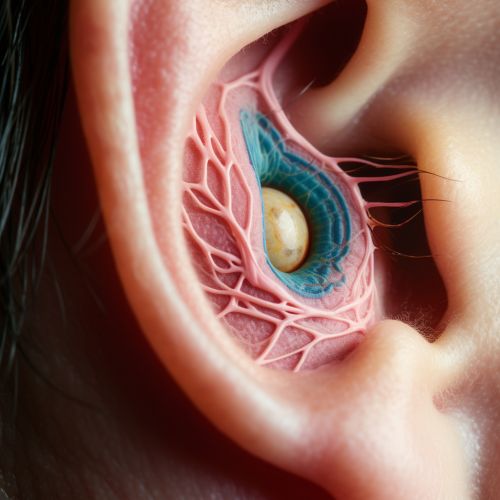Benign paroxysmal positional vertigo
Introduction
Benign paroxysmal positional vertigo (BPPV) is a common disorder of the inner ear that results in episodes of intense vertigo. This condition is characterized by brief episodes of mild to intense dizziness that are usually triggered by specific changes in the position of the head. This might occur when tipping the head up or down, when lying down, or when turning over or sitting up in bed.


Etiology
The etiology of BPPV is believed to be due to debris which has collected within a part of the inner ear. This debris can be a result of age, a minor to severe blow to the head, or an infection. The debris is made up of small crystals of calcium carbonate (otoconia) that clump up in the inner ear canals. The inner ear sends signals to the brain about head and body movements relative to gravity. It helps you keep your balance. BPPV occurs when these crystals dislodge from their normal location and move into the semicircular canals, where they are not supposed to be. When enough of these particles accumulate in one of the semicircular canals they interfere with the normal fluid movement that these canals use to sense head motion, causing the inner ear to send false signals to the brain.
Symptoms
The primary symptom of BPPV is the sensation of the world spinning around you, which can be brought on by changes in the position of your head. This sensation can be triggered by everyday activities such as looking up or down, turning your head quickly, rolling over in bed or getting up in the morning. Other symptoms can include loss of balance, nausea, vomiting, concentration difficulties, and a feeling of lightheadedness. These symptoms can last for a few seconds to a few minutes and can be quite severe. Some people may also experience a ringing sensation in their ears (tinnitus) or a feeling of fullness in their ears.
Diagnosis
Diagnosis of BPPV is typically based on the symptoms and a physical examination. During the examination, a healthcare provider might perform a maneuver called the Dix-Hallpike test. This involves turning the head of the person to one side and quickly laying them down on their back with their head hanging off the edge of the examination table. If this maneuver results in nystagmus (involuntary eye movements) and vertigo, the diagnosis of BPPV is confirmed. Other tests that may be used to confirm a diagnosis of BPPV include electronystagmography (ENG) or videonystagmography (VNG), which test the movement of the eyes, and magnetic resonance imaging (MRI) to rule out other possible causes.
Treatment
Treatment for BPPV can include a series of movements performed in a doctor's office that are designed to move the crystals out of the semicircular canal and into an area of the inner ear where they will not cause symptoms. This treatment is known as the Epley maneuver. Other treatments can include the Semont maneuver and Brandt-Daroff exercises. In some cases, if these treatments are not effective, surgery may be considered. Medications are generally not effective for treating BPPV, but can be used to relieve the symptoms of nausea and motion sickness associated with the vertigo.
Prognosis
The prognosis for individuals with BPPV is generally very good. Most people can manage their symptoms with the maneuvers and exercises described above, and some people may have no symptoms at all. However, the condition can recur, and ongoing exercises may be needed to control the symptoms. In some cases, if left untreated, BPPV can lead to complications such as falls, depression, or other psychological problems due to the chronic dizziness and imbalance.
Epidemiology
BPPV is the most common cause of vertigo. It is most common in people over the age of 60, but can occur in people of any age. Women are more likely to be affected than men. It is estimated that about 2.4% of people will experience BPPV at some point in their lives.
